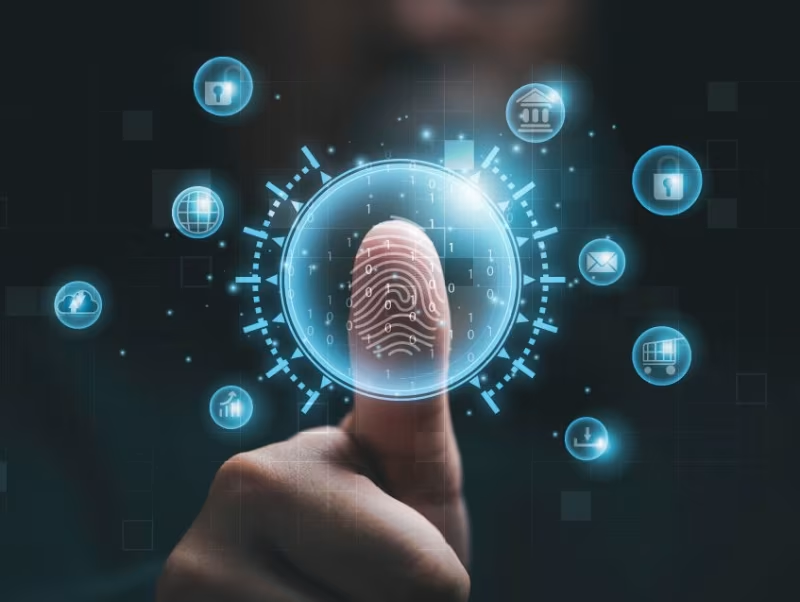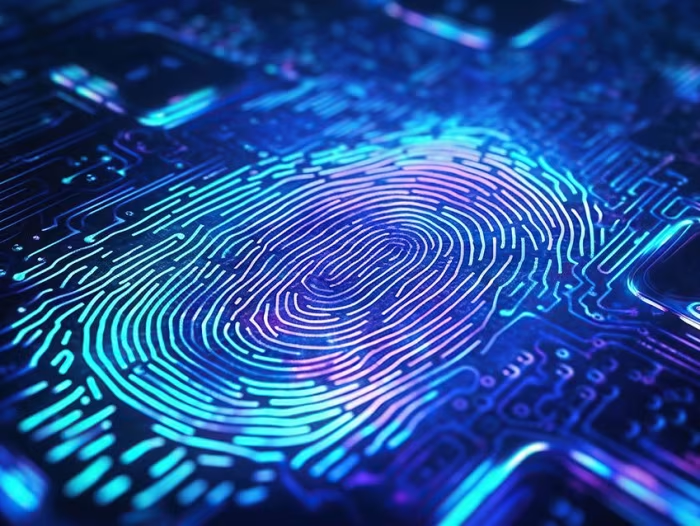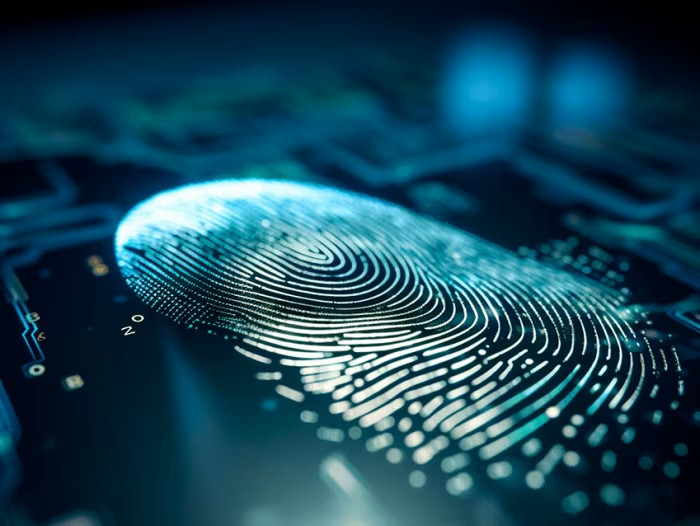Resource / Online Journal
Biometric Authentication Methods and Benefits Explained
Explore the key biometric authentication methods, fingerprint, facial, iris, retina, voice, and behavioral biometrics. Learn how AI-driven innovations enhance security, privacy, and user experience in modern identity verification.
Published on Nov 14, 2025

Biometric authentication methods have emerged as a transformative solution for verifying identity using distinctive biological or behavioral markers, such as fingerprints, facial contours, iris textures, and vocal patterns. Unlike traditional credentials, biometrics offer a resilient, user-friendly alternative that’s hard to forge or steal.
Recent breakthroughs, especially those powered by artificial intelligence, have elevated biometric systems to new heights, enabling smarter fraud detection, touchless scanning, and continuous identity validation. This article explores the spectrum of biometric methods and their compelling advantages, from bolstering cybersecurity to streamlining user interactions.
Overview of Biometric Authentication Methods
Fingerprint Recognition
Fingerprint recognition is one of the most established biometric authentication techniques, relying on the unique ridge and valley patterns present on human fingertips. Traditional systems often use capacitive sensors, while advanced solutions employ ultrasonic technology. Recent innovations have transformed fingerprint scanning into a faster, more hygienic process. Ultrafast sensors now deliver near-instant authentication and contactless fingerprint systems.
Fingerprint recognition is widely deployed across diverse environments. Smartphones use embedded sensors for secure unlocking and app authentication. In access control, organizations integrate fingerprint scanners into entry systems for high-security facilities, reducing reliance on passwords or cards.
Facial Recognition
Fingerprint recognition is one of the most established biometric authentication techniques, using unique ridge and valley patterns on fingertips. Traditional systems rely on capacitive sensors, while advanced solutions use ultrasonic technology. Innovations like ultrafast and contactless sensors deliver near-instant, hygienic authentication. Common facial recognition applications include mobile device unlocking, identity verification at airports, and access control for high-security facilities.
Iris and Retina Scanning
Among the most advanced biometric authentication methods, iris and retina scanning stand out for their exceptional precision. Iris recognition uses infrared light and cameras to capture unique eye patterns fast, non-invasively, and effectively from a distance.
Retina scanning maps blood vessels at the back of the eye with a low-energy beam. It’s more intrusive and proximity-based, limiting adoption. Iris scans are commonly used in electronic passports, airports, and state and federal agencies for identity verification and access management.
Voice Recognition
Voice recognition, a key biometric authentication method, verifies a user’s identity by analyzing unique vocal characteristics like vocal traits like pitch, tone, rhythm, and accent to create a voiceprint. During the authentication process, the system captures a voice sample, extracts these distinctive features, and creates a digital biometric model, or voiceprint.
Enhanced noise cancellation techniques now allow sophisticated biometric systems to filter background sounds in challenging environments. Applications include call centers, banking transactions, remote access management, and voice assistants. Additionally, voice assistants on mobile devices increasingly integrate voice biometrics for secure commands.
Emerging Methods
Emerging methods are using multimodal authentication for enhanced security. These methods analyze behavioral characteristics such as typing rhythm, mouse movements, gait, and usage patterns. For instance, keystroke dynamics measure typing speed, pressure, and rhythm, while gait analysis observes walking style. Unlike passwords or static authentication methods, this approach enables continuous identity verification during active sessions, making it harder for attackers to bypass.
By integrating behavioral traits with physical identifiers, sophisticated biometric systems deliver resilience against evolving security risks, ensuring biometric data remains stored securely while enabling seamless, passwordless authentication.
Benefits of Biometric Authentication
Enhanced Security
Biological characteristics are extremely difficult to forge, making identity verification far more resilient. For instance, healthcare organizations implementing modern authentication solutions have reported up to a 68% reduction in unauthorized access incidents compared to password-based systems. Similarly, financial institutions and enterprises using multifactor authentication that incorporates biometrics have seen significant declines in account takeovers and fraud attempts. Multimodal biometric authentication reduces security risks and improves overall security posture by combining "something you are" with other factors.
Modern biometric systems use privacy-preserving techniques like storing data locally on devices and applying liveness detection to prevent spoofing. These measures secure biometric information, reduce breach risks, and build user trust. The result? A streamlined authentication process that protects sensitive data and eliminates password fatigue.
Improved User Convenience and Experience
Biometric authentication delivers exceptional convenience by enabling faster, frictionless authentication processes. It eliminates password fatigue, reduces frequent lockouts, and streamlines the login process, making modern biometric authentication solutions both secure and user-friendly.
In real-world scenarios, authorizing biometric payments, enterprises integrating biometric authentication options into security systems for building entry and system access, and improving productivity are associated with password resets or lost access cards. This enhances user experience and encourages compliance with security measures, reducing support costs. By combining biometric traits with multimodal authentication or multi-factor authentication, organizations achieve a balance of convenience and security.
Fraud and Risk Reduction
Biometric authentication reduces fraud and mitigates security risks by leveraging advanced biometric technology and AI-driven intelligence. Modern biometric authentication solutions integrate real-time liveness detection to distinguish genuine users from spoofing attempts such as photos, masks, or deepfake videos. This capability ensures that attackers cannot easily deceive fingerprint scanners or bypass facial recognition systems, strengthens the authentication process, and protects sensitive data.
AI-enhanced biometric systems monitor behavioral biometrics like typing speed, mouse movements, and device interaction. Financial institutions and enterprises adopting multimodal biometric authentication report significant reductions in fraud losses and regulatory risks. By combining physical or behavioral traits with AI analytics, organizations achieve a layered security approach that aligns with multi-factor authentication strategies. These modern biometric authentication solutions not only safeguard user accounts and access confidential information but also maintain a seamless login process, ensuring both security and user convenience.
Regulatory Compliance
Frameworks such as KYC, AML, hard-to-forge biometric identification, and global privacy laws like GDPR mandate robust identity verification to prevent fraud, unauthorized access, and misuse of sensitive data. By leveraging biometric traits, including fingerprints, facial features, iris patterns, and voice recognition, organizations can achieve compliance while enhancing their security posture.
Under GDPR, biometric data is classified as a special category of personal information, requiring explicit consent, transparency, and strict data storage controls. Businesses must inform users about how the information is collected and its purpose and provide rights for data access and deletion. Similarly, U.S. state laws such as BIPA (Illinois) and regulations in Texas and Washington impose legal obligations on the collection and handling of biometric authentication options, emphasizing consent and secure storage.
To maintain compliance, organizations should regularly audit authentication systems for accuracy, bias, and vulnerabilities; ensure biometric models are stored securely; and uphold transparency. Aligning modern biometric authentication solutions with regulatory frameworks not only mitigates security risks but also builds trust, ensuring lawful and ethical use of biometric technology across critical sectors.
Latest Technological Trends and Innovations
AI and machine learning are boosting accuracy and enabling real-time liveness. This includes the detection and prevention of spoofing across facial recognition systems, fingerprint scanners, and behavioral biometrics. Post-COVID, contactless biometrics have gained traction as a hygiene and convenience option in airports, healthcare, and enterprise security systems.
Blockchain integration is emerging for decentralized biometric data storage, enhancing privacy and reducing centralized breach risks. Meanwhile, edge computing brings biometric processing closer to mobile devices, reducing latency and improving performance while keeping biometric information stored securely.
Industry standards like FIDO2 and W3C biometric specifications are shaping interoperability and privacy best practices, enabling secure, passwordless authentication methods across platforms.
Challenges and Considerations
Privacy concerns remain paramount since biometric data is immutable; unlike passwords, it cannot be changed if compromised. Breaches of biometric information pose long-term security risks. Strong encryption, decentralized storage, and compliance with regulations are essential.
Accuracy disparities and algorithmic bias can lead to false positives or negatives, impacting fairness and reliability. Fallback authentication options are critical for scenarios where sensors fail, or users cannot provide biometric traits. Educating users on these alternatives ensures trust and usability.
Finally, securing data and lifecycle management are vital to prevent misuse. Robust security measures, including edge processing and multi-factor authentication, to maintain compliance and protect sensitive data are critical.
Conclusion
Biometric authentication strikes the perfect balance between security and convenience, offering a robust alternative to traditional credentials. With AI-driven innovation and evolving standards, these systems will continue to overcome challenges and enhance trust. Organizations adopting biometric methods today can contact cybersecurity provider TechDemocracy to strengthen security posture, deliver seamless user experiences, and increase ROI in the long run.
Recommended articles


The Evolution of Identity Security: From Passwords to Biometrics
Take Your Identity Strategy
to the Next Level
Strengthen your organization's digital identity for a secure and worry-free tomorrow. Kickstart the journey with a complimentary consultation to explore personalized solutions.